Dresden Trip (3-5 June 2006) - Dresden
It didn't take too long to get to Dresden from Leipzig, slightly more than an hour only. But it's quite a beautiful city.
Dresden is the capital of Freistaat Sachsen (or Free State of Saxony), a state in the northeast part of Germany, north of the Czech Republic. It is situated on the River Elbe, the line that divided East and West Germany as well as the dumping ground (quite literally) of the ashes of Adolf Hitler, Eva Braun, Joseph and Magda Goebbels and their six children in 1970.
Dresden has a long history of being the capital but was destroyed in an Allied bombing during World War II. Since German re-unification, Dresden has been an important cultural, political and economic center of Eastern Germany.
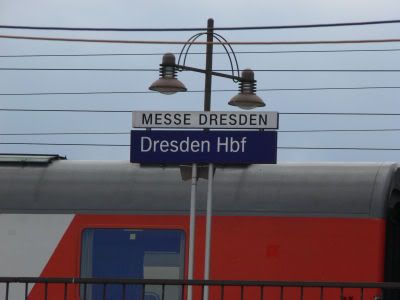
Arriving at the train station
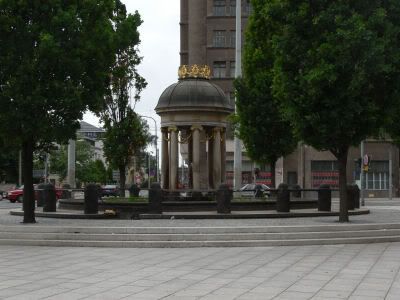
Albertplatz in the Neustadt (New Town) district
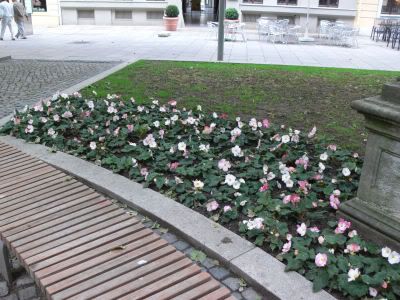
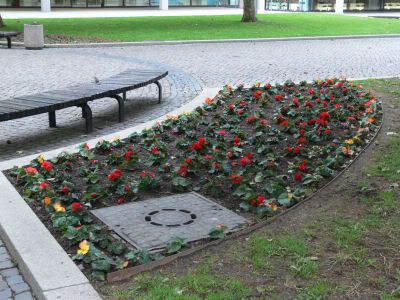
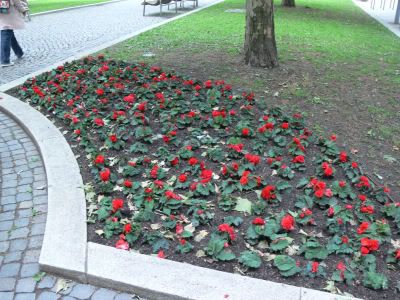
Some not-so-beautiful flowers on the way down to the Altstadt (Old Town)
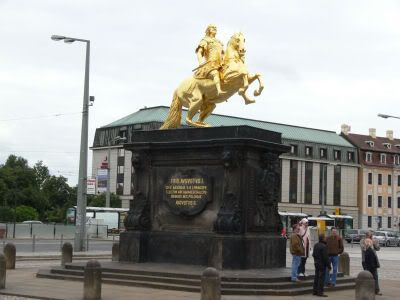
Statue of Augustus the Strong, Elector of Saxony
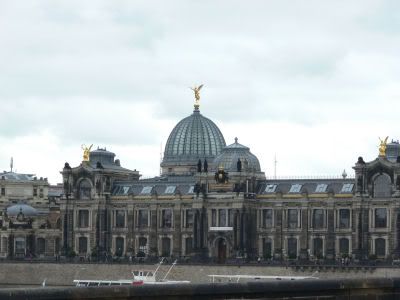
This is an art gallery... yes, believe it!
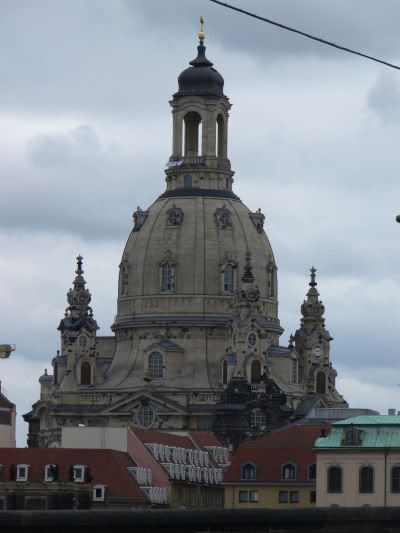
The Frauenkirche, from afar
The Frauenkirche is a Protestant church that is special, because it was almost totally destroyed, with only one original wall left standing. It has been reconstructed over 13 years, finishing recently in 2005. Much of the original rubble was documented and re-used in the reconstruction, thanks to modern technology.
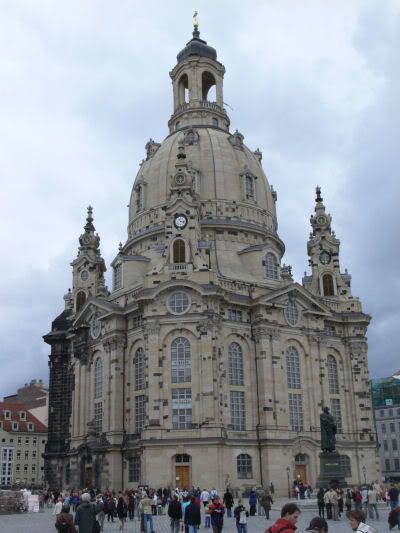
The Frauenkirche
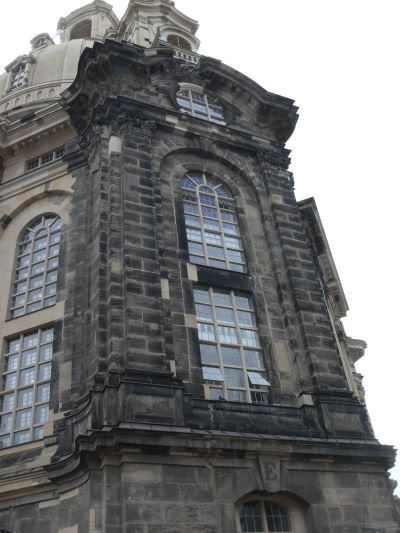
The original wall that wasn't destroyed
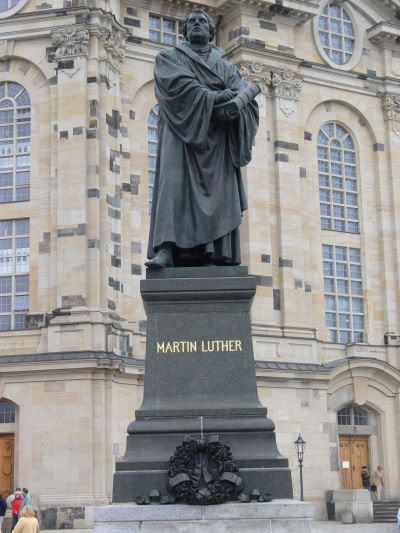
Statue of Martin Luther in front, the only thing other than that wall to survive the bombings
And there is also the Hofkirche, a Roman Catholic church in the middle of a Protestant area. Built from 1738 to 1751, the church was also damaged in the bombings and reconstructed in the mid-80s.
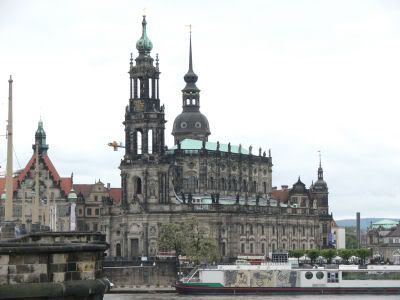
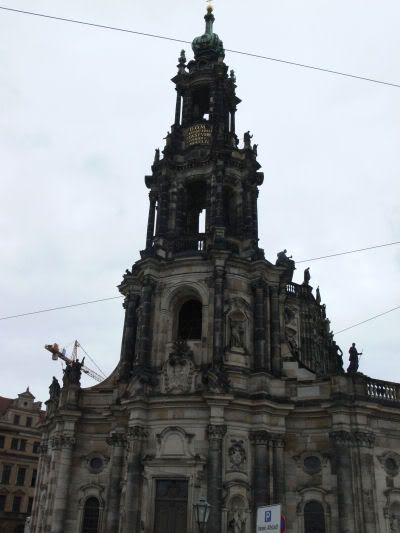
The Hofkirche
The most famous building in Dresden is undoubtedly the Semper Oper. Built in 1841 by architect Gottfried Semper in Early Renaissance style, but was destroyed by the Allied bombings. It was rebuilt exactly 40 years later on 13 February 1985, almost the same as it was before the war.
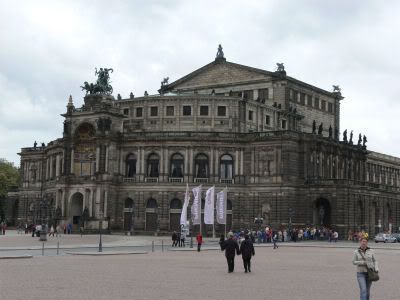
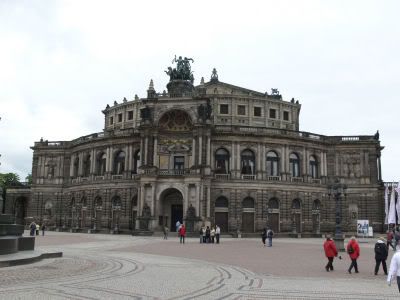
The Semper Oper
Nearby is the Zwinger Palace. The name "Zwinger" came from the German word "bezwingen", which means "to conquer". Built from 1710 to 1728, it was also destroyed in the bombing and was reconstructed again. It now houses an art gallery, a mathematics and physics museum and a collection of Meissen porcelain.
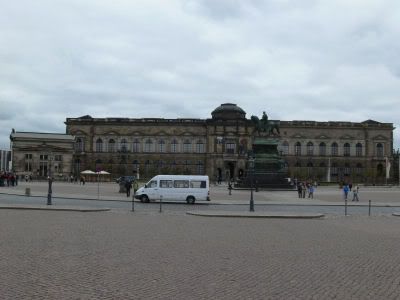
The Zwinger from the Theaterplatz
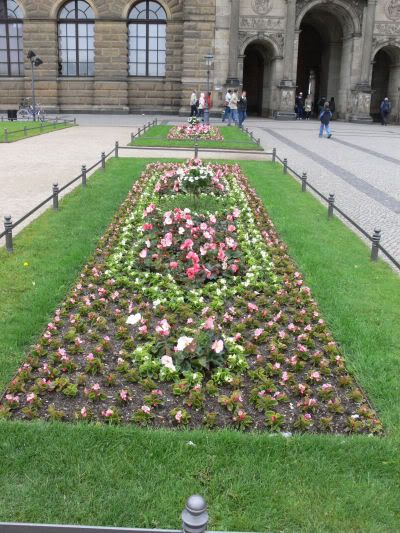
The flowers here look more decent
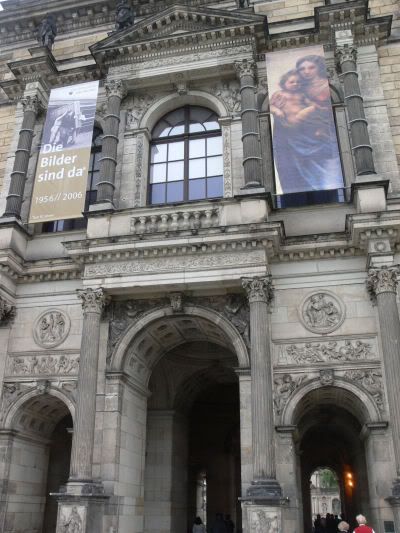
The main archway
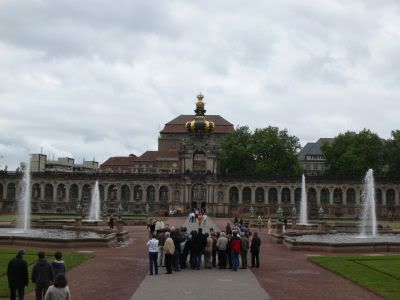
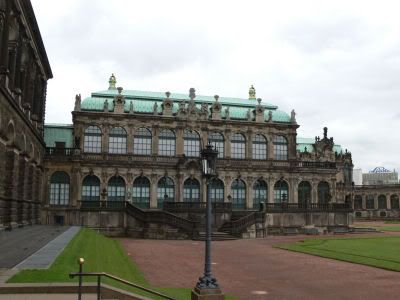
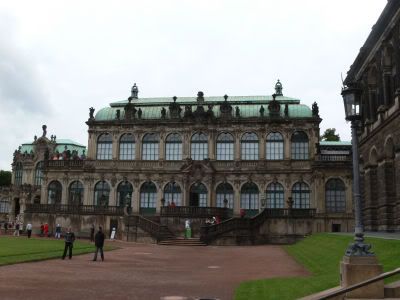
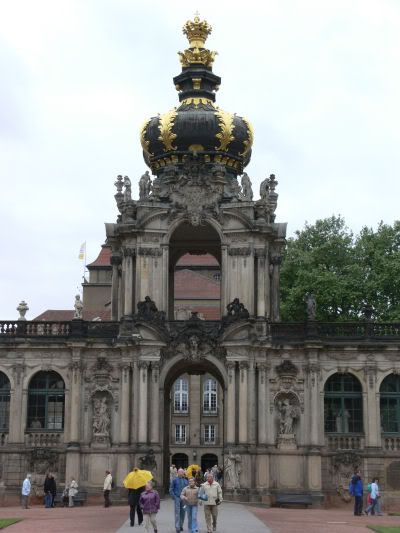
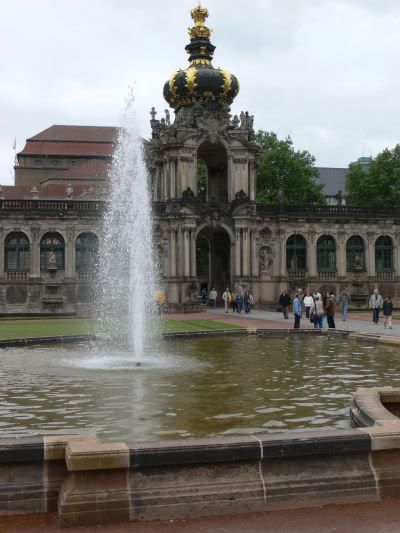
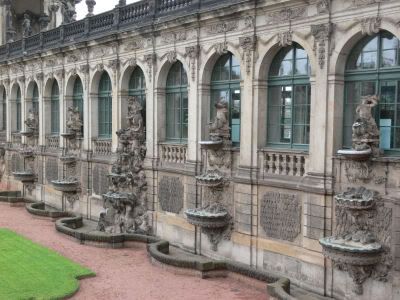
Statues of nymphs everywhere
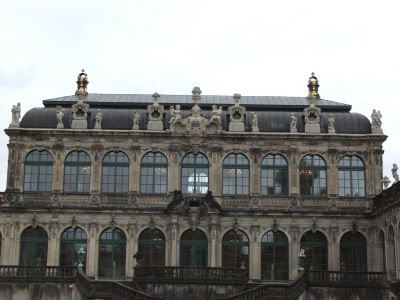
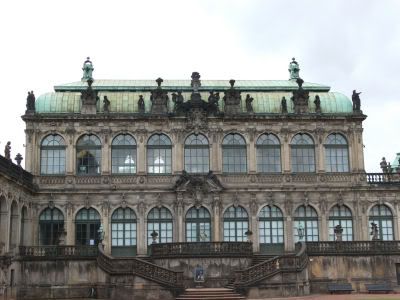
Compare and contrast: Old and new
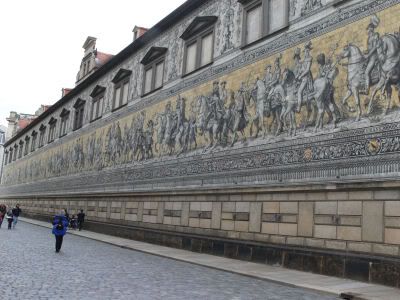
There's also a "Procession of Princes", a wall made entirely of famous Meissen porcelain outside
All these buildings were very close to each other and to the river. Too bad it was cloudy though.
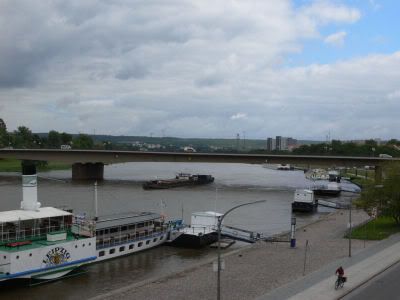
The River Elbe
And then moving on to the main shopping stretch, Prager Straße. This is nowhere like the Dresden I imagined to be. It's new and modern, very much like Singapore (or better).
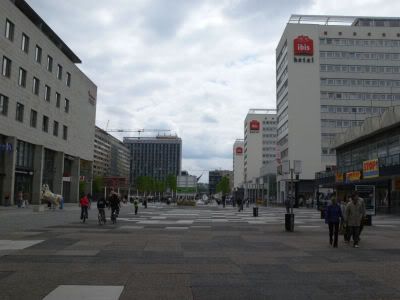
Don't ask me why there are 3 Ibis hotels side-by-side
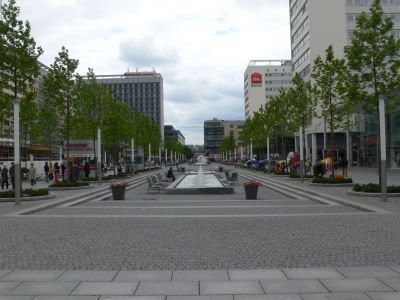
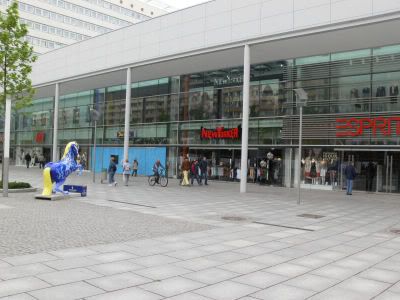
Modern and beautiful, I think better than Orchard Road
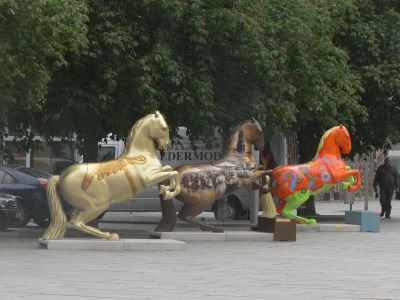
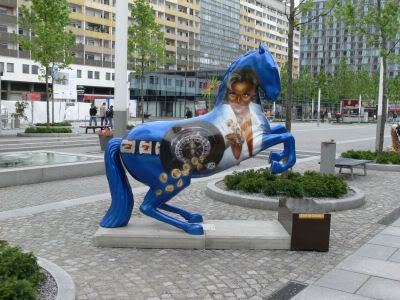
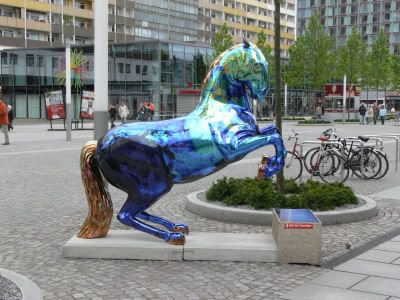
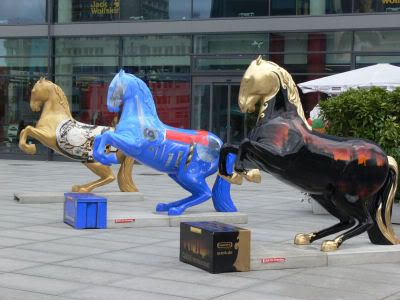
Munich's got lions, Berlin's got bears, they got horses
We also went to the Großer Garten, where there was a small palace in the middle.
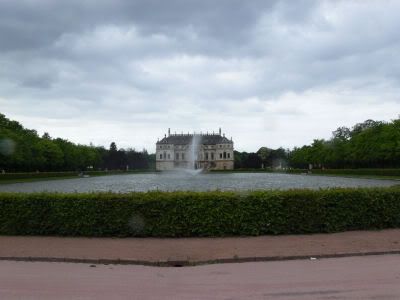
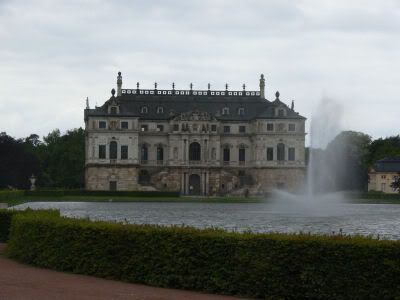
And lastly, there's this huge imitation of a mosque which was a former tobacco factory, the Yenidz.
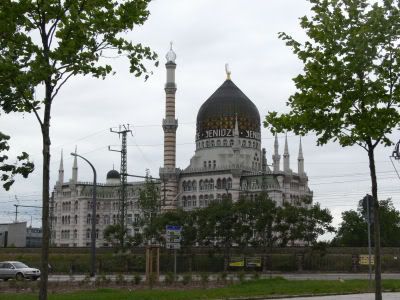
The Yenidz
Enough for a busy day, so it was over the bridge and back for a nap. Dresden's easy to cover, with so many of the buildings packed together. But before that, a nice picture over the Elbe:
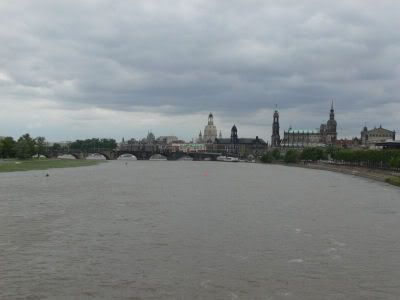
Yup, quite cloudy over the weekend, terrible. Our schedule didn't permit us to be more adventurous, so we missed the beautiful Saxon Switzerland and Meissen. That's why we decided to come back early instead.
BUT... not before some night shots!
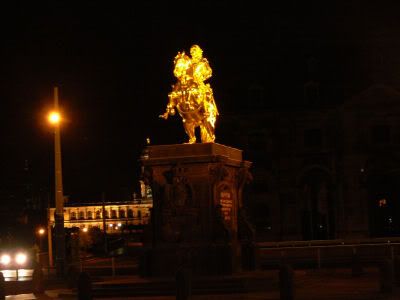
Statue of Augustus the Strong
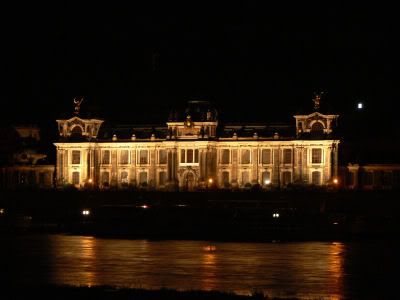
The Art Academy
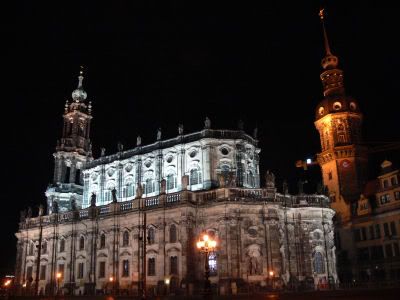
The Hofkirche
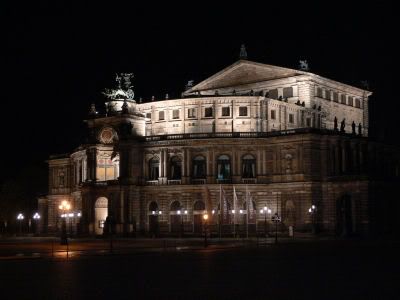
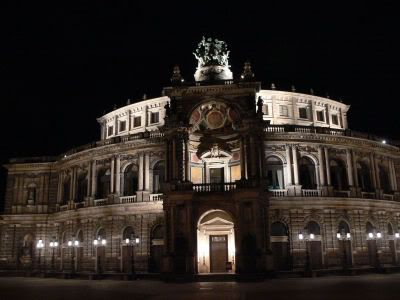
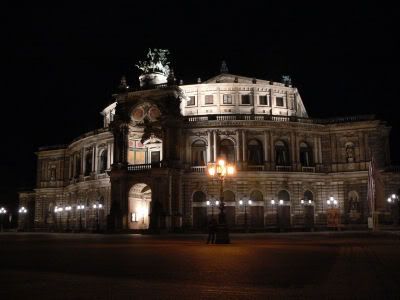
And the Semper Oper, that's me in beside the street lamp
So much for a weekend getaway. I'll still say that Dresden is a beautiful city, but spend at least 3 days to get the most out of it. Going up and down the River Elbe is a good idea too.
Photobucket: Dresden
Dresden is the capital of Freistaat Sachsen (or Free State of Saxony), a state in the northeast part of Germany, north of the Czech Republic. It is situated on the River Elbe, the line that divided East and West Germany as well as the dumping ground (quite literally) of the ashes of Adolf Hitler, Eva Braun, Joseph and Magda Goebbels and their six children in 1970.
Dresden has a long history of being the capital but was destroyed in an Allied bombing during World War II. Since German re-unification, Dresden has been an important cultural, political and economic center of Eastern Germany.

Arriving at the train station

Albertplatz in the Neustadt (New Town) district



Some not-so-beautiful flowers on the way down to the Altstadt (Old Town)

Statue of Augustus the Strong, Elector of Saxony

This is an art gallery... yes, believe it!

The Frauenkirche, from afar
The Frauenkirche is a Protestant church that is special, because it was almost totally destroyed, with only one original wall left standing. It has been reconstructed over 13 years, finishing recently in 2005. Much of the original rubble was documented and re-used in the reconstruction, thanks to modern technology.

The Frauenkirche

The original wall that wasn't destroyed

Statue of Martin Luther in front, the only thing other than that wall to survive the bombings
And there is also the Hofkirche, a Roman Catholic church in the middle of a Protestant area. Built from 1738 to 1751, the church was also damaged in the bombings and reconstructed in the mid-80s.


The Hofkirche
The most famous building in Dresden is undoubtedly the Semper Oper. Built in 1841 by architect Gottfried Semper in Early Renaissance style, but was destroyed by the Allied bombings. It was rebuilt exactly 40 years later on 13 February 1985, almost the same as it was before the war.


The Semper Oper
Nearby is the Zwinger Palace. The name "Zwinger" came from the German word "bezwingen", which means "to conquer". Built from 1710 to 1728, it was also destroyed in the bombing and was reconstructed again. It now houses an art gallery, a mathematics and physics museum and a collection of Meissen porcelain.

The Zwinger from the Theaterplatz

The flowers here look more decent

The main archway






Statues of nymphs everywhere


Compare and contrast: Old and new

There's also a "Procession of Princes", a wall made entirely of famous Meissen porcelain outside
All these buildings were very close to each other and to the river. Too bad it was cloudy though.

The River Elbe
And then moving on to the main shopping stretch, Prager Straße. This is nowhere like the Dresden I imagined to be. It's new and modern, very much like Singapore (or better).

Don't ask me why there are 3 Ibis hotels side-by-side


Modern and beautiful, I think better than Orchard Road




Munich's got lions, Berlin's got bears, they got horses
We also went to the Großer Garten, where there was a small palace in the middle.


And lastly, there's this huge imitation of a mosque which was a former tobacco factory, the Yenidz.

The Yenidz
Enough for a busy day, so it was over the bridge and back for a nap. Dresden's easy to cover, with so many of the buildings packed together. But before that, a nice picture over the Elbe:

Yup, quite cloudy over the weekend, terrible. Our schedule didn't permit us to be more adventurous, so we missed the beautiful Saxon Switzerland and Meissen. That's why we decided to come back early instead.
BUT... not before some night shots!

Statue of Augustus the Strong

The Art Academy

The Hofkirche



And the Semper Oper, that's me in beside the street lamp
So much for a weekend getaway. I'll still say that Dresden is a beautiful city, but spend at least 3 days to get the most out of it. Going up and down the River Elbe is a good idea too.
Photobucket: Dresden

0 Comments:
Post a Comment
<< Home